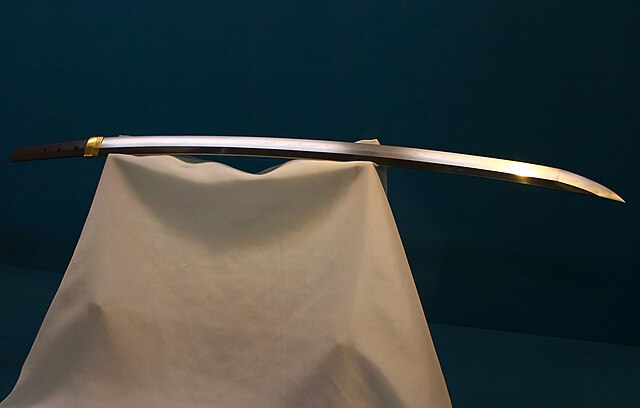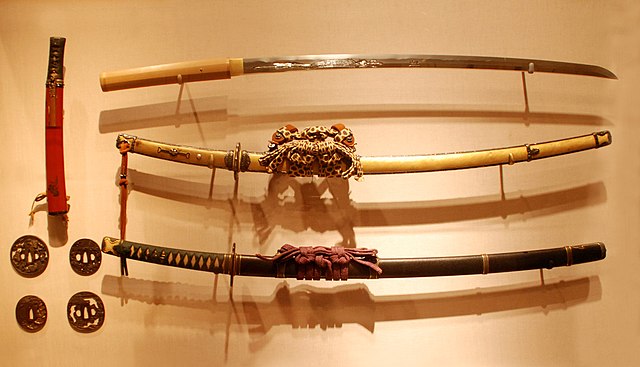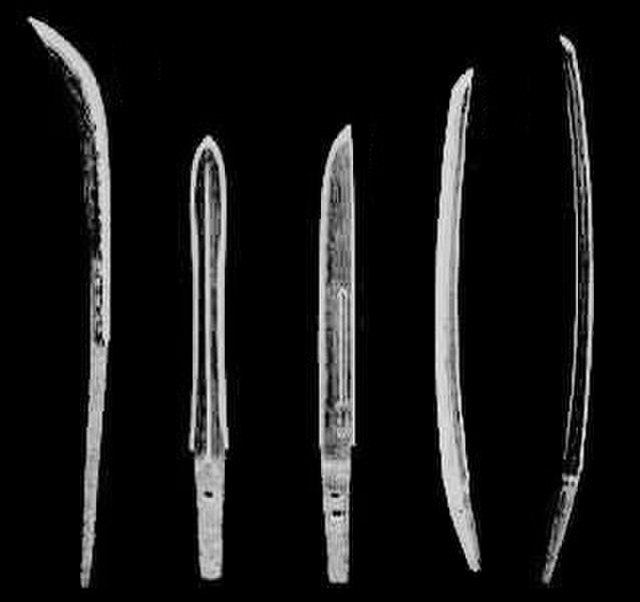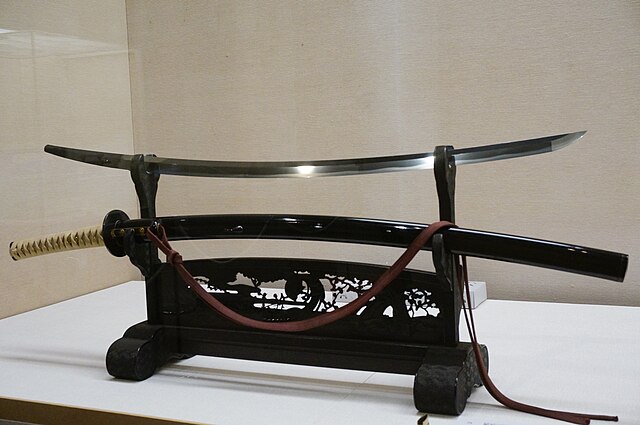A katana is a Japanese sword characterized by a curved, single-edged blade with a circular or squared guard and long grip to accommodate two hands. Developed later than the tachi, it was used by samurai in feudal Japan and worn with the edge facing upward. Since the Muromachi period, many old tachi were cut from the root and shortened, and the blade at the root was crushed and converted into a katana. The specific term for katana in Japan is uchigatana (打刀) and the term katana (刀) often refers to single-edged swords from around the world.
A katana modified from a tachi forged by Motoshige. Bizen Osafune school influenced by the Sōshū school. 14th century, Nanboku-chō period. Important Cultural Property. Tokyo National Museum
Mei (signature) and Nakago (tang) of an Edo period katana
A Sōshū school katana modified from a tachi forged by Masamune. As it was owned by Ishida Mitsunari, it was commonly called Ishida Masamune. Important Cultural Property. Tokyo National Museum
A Sōshū school katana modified from a tachi, Kiriha Sadamune, forged by Sadamune, son of Masamune. 14th century, Kamakura period. Important Cultural Property. Tokyo National Museum
A Japanese sword is one of several types of traditionally made swords from Japan. Bronze swords were made as early as the Yayoi period, though most people generally refer to the curved blades made from the Heian period (794–1185) to the present day when speaking of "Japanese swords". There are many types of Japanese swords that differ by size, shape, field of application and method of manufacture. Some of the more commonly known types of Japanese swords are the uchigatana, tachi, ōdachi, wakizashi, and tantō.
Japanese swords. Two tachi with full mountings (middle and bottom right), a sword with a Shirasaya-style tsuka (top right), a wakizashi (top left), and various tsuba (bottom left).
A range of Japanese blade types, from left to right: naginata, ken, tantō, katana (uchigatana) and tachi (not to scale).
Tachi. The blade was made by Masatsune. Blade, 12th century; mounting, 18th century. Tokyo National Museum
A katana forged by Hizen Tadayoshi I. (Saijo Ō Wazamono) Azuchi–Momoyama period. (top) Katana mounting, Late Edo period. (bottom)








